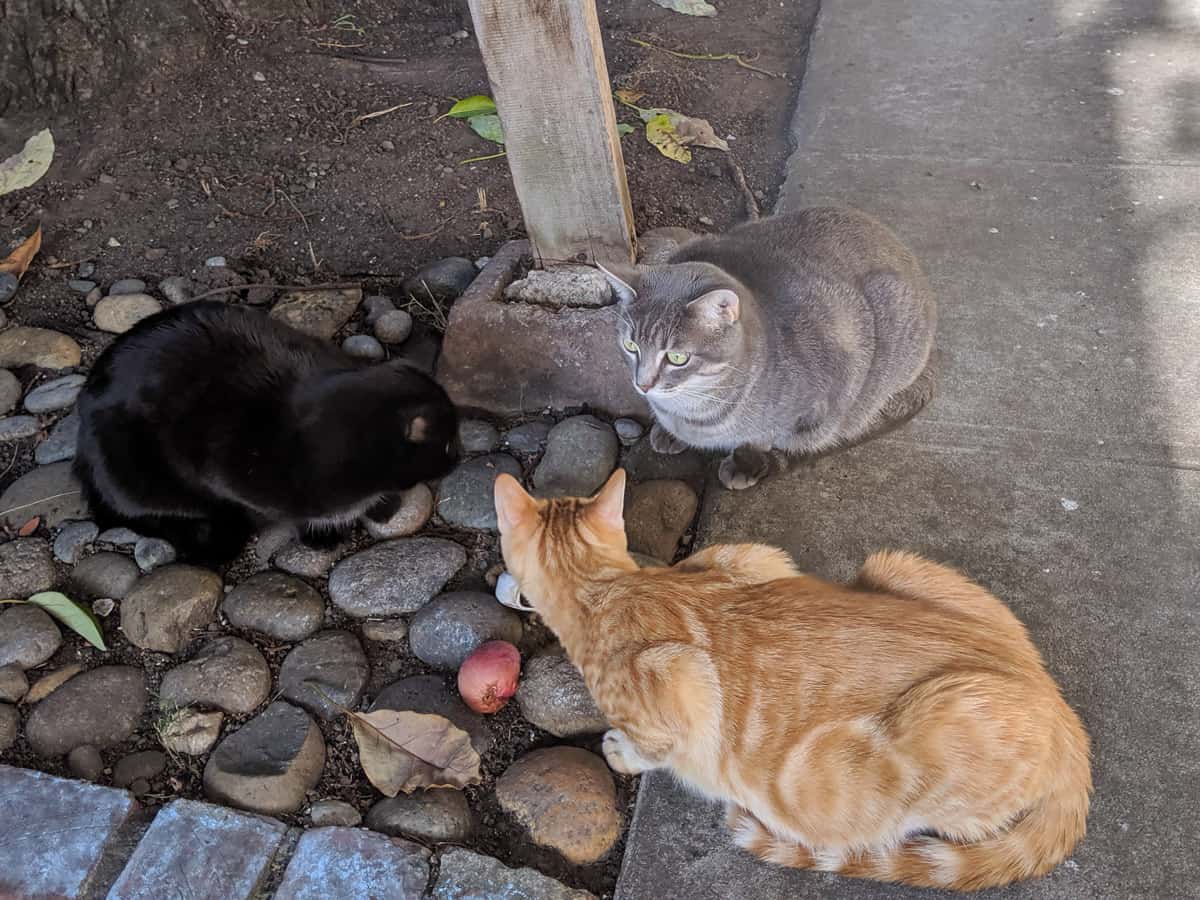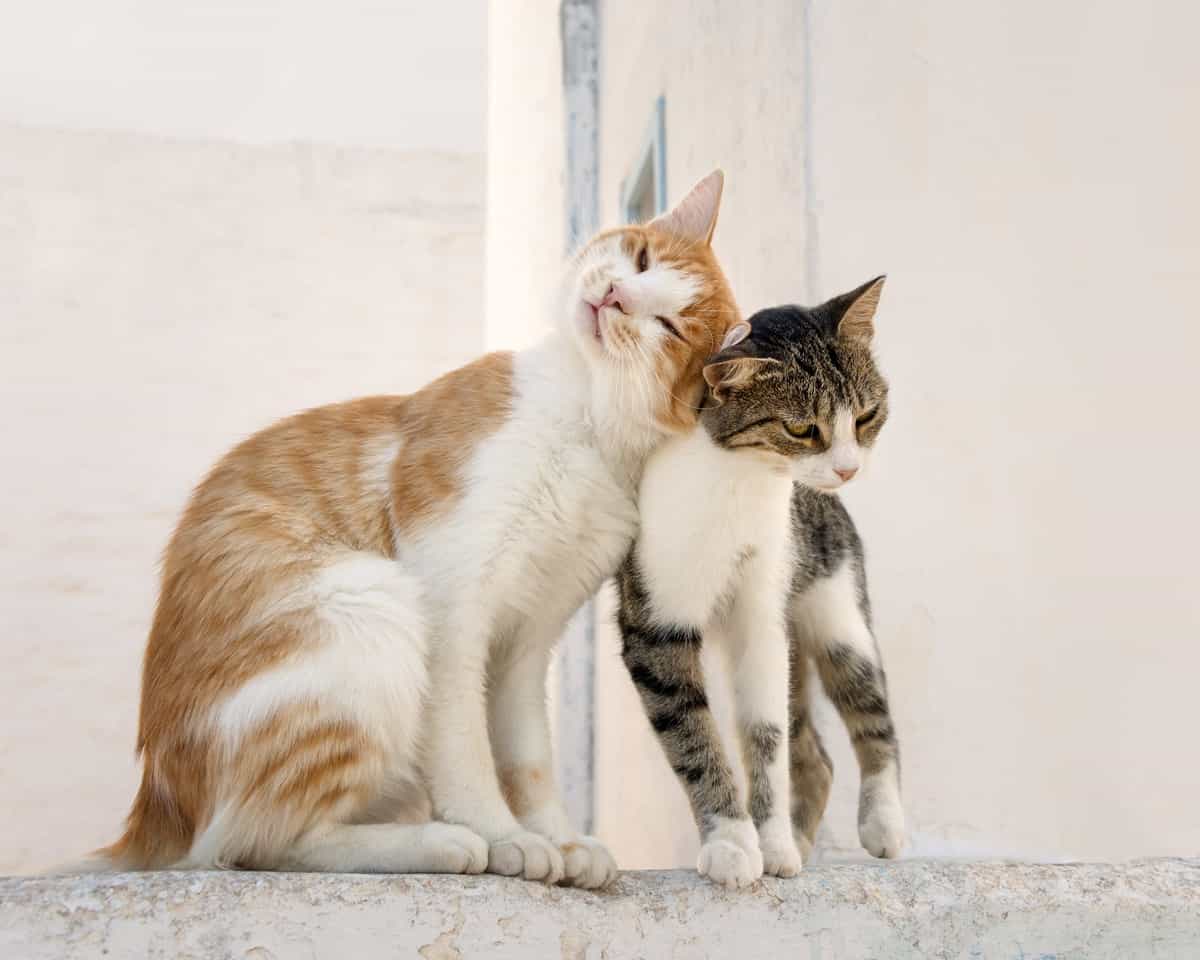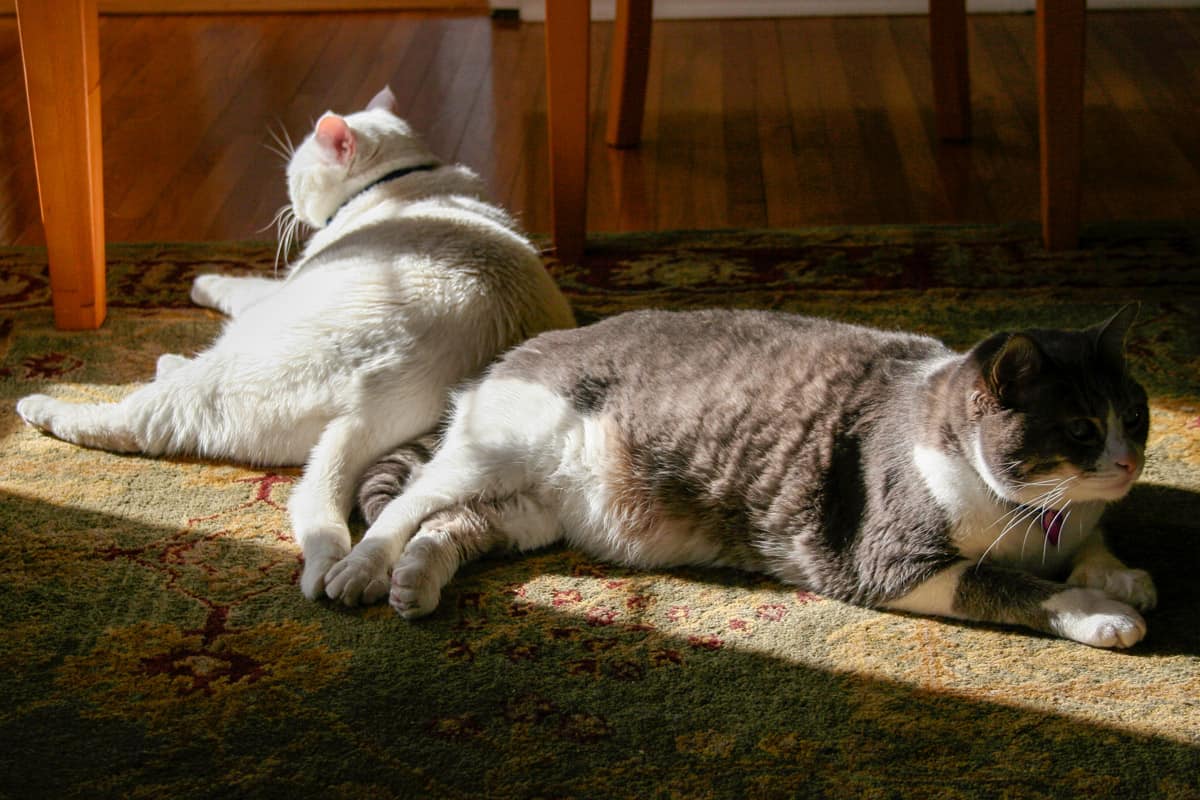You probably have an idea by now of how cats interact with and communicate with humans. If you’ve had a hungry cat and you are late for their dinner time, you know how loud their meowing can become! And if a cat is snuggled up next to you and purring, you know they are comfortable and happy.
But how do cats actually communicate with another cat? And how does their communication style with each other compare to how they communicate with humans? The way cats communicate with each other can generally be categorized as communicating through body language, vocalizations, and scents.
Body language and physical cues
Most know what an upset cat sounds like. It can be vocalizations like hissing, growling, yowling, howling, or any combination of these. But their body language often changes too. Cats communicate through body language with each other, but it is also easy for us humans to tell through their body language too.
For example, averting their eyes can be a sign that they are upset or afraid. Instead of their ears being held high, they’ll often be turned at a bit of an angle or completely flattened against their head if the cat is afraid. Unlike a dog with a wagging tail, a cat swishing its tail back and forth is typically conveying that it is not happy about something.
Also, their fur being bristled or standing on end and an overly arched back or tail can be signs of an angry or defensive cat. The tail can become bristled in the same way that the hairs on the cat’s body can. Another way to describe this is usually as the cat’s tail or body looking puffed up or puffed out.
This process of the hairs being raised is known as piloerection. Its purpose is to make the cat look bigger! This usually can be seen with fear or anger responses. Sometimes though, cats will display nervousness or submission by tucking their tails behind their legs.
If a cat is feeling confident, it will walk with its tail held high and its ears perked up. Slow blinking combined with wide, calm eyes or sometimes droopy relaxed eyelids is a sign of trust, calmness, and even love and affection.
A hard, intense stare with wide eyes and dilated pupils indicates that the cat is alert or alarmed about something. Similarly, narrow, slit eyes are most often a sign of fear, aggression, or both.

Rolling over and exposing their belly is a sign that they feel comfortable and trusting. To say hello to each other in a friendly way, many cats will gently bump noses together. To show affection to another cat, they’ll rub against each other or hook their tails together. Grooming one another is also a way in which cats communicate with each other. It is a statement of love, caring, and compassion.
Vocalizations
Some common vocalizations that cats do are, of course, the meow, the hiss, and the purr, but they also make snarling noises, yowls, spits, and howls. Cats meow and use other vocalizations to communicate with other cats and can easily understand each other. But typically, cats are far more likely to use the more pleasant forms of vocalizations like meowing, purring, trilling, or chirping, around their humans.
Purring is one of the most interesting vocalizations that a cat will do. Typically, people associate it with signs of contentment or meaning that they are happy and relaxed. But it can also be a form of self-soothing and self-comforting if they are feeling unwell or anxious.
Trilling is described as a sound that is somewhat like a purr and a meow. Many times, mother cats will use this sound to get the attention of their kittens.

Chirping or chattering usually happens when a bird sees something really exciting, like birds or squirrels out in the yard. They are eager and excited but know they can’t get to it.
Yowling can be just a normal communication behavior for some cats, but in others who don’t make the sound frequently, it can be an indicator of distress. With cats who haven’t been fixed, yowling can be a part of their mating behavior.
Though cats don’t typically meow at each other or to get one another’s attention, they do meow at their mother when they are kittens. When they are kittens, their mother will respond by comforting them or feeding them. However, once the kittens are weaned from their mother’s milk, the mother won’t typically be as responsive to her kitten’s meows.
So, in a way, when your cat meows to communicate with you, it could be said that they see you as a mother figure- a source of comfort, companionship, and, of course, food. So, don’t feel weird or ashamed if you call yourself a cat mom or a cat dad. That’s just how your cat sees you!
Scents
In addition to marking their territory with their scent glands or pheromones, cats sometimes will mark their territory by spraying urine, especially if it is an outdoor cat or a cat that has not been spayed or neutered. This behavior can sometimes be a stress or fear response too.

Cats will sniff noses to greet familiar cats and to learn about where that cat has been.
Head-butts and rubbing against people and other animals are other ways cats physically communicate with each other. They do this to try to transfer their scent onto the object, animal, or person in a way that tells other cats that another cat has marked its territory.
Cats are actually known to have scent glands on their cheeks and jaw as well as near their tail. You can see now why cats love to head butt or rub its cheeks against your legs.
Do cats communicate with each other and humans similarly?
In body language, cats communicate with other cats and humans in much the same way. However, as touched on earlier, vocalizations by adult cats tend to be saved more so for their humans.
A cute brief meow might just be a way of your cat saying hello, or a long, drawn-out meow might be your cat complaining to you that they want food or attention! Even a series of meows can be your cat trying to express emotions.

Many believe that cats have learned to become more vocal around humans over time because it has proven to them to be the sure-fire way of getting our attention. Who could possibly ignore a kitty that is meowing for attention?!







